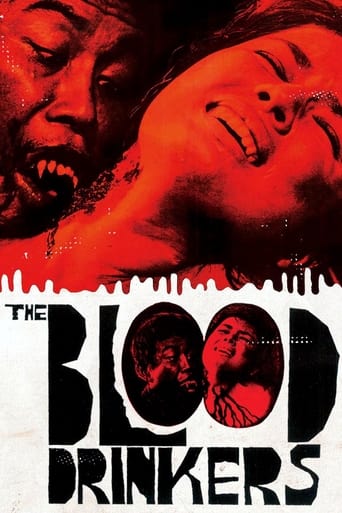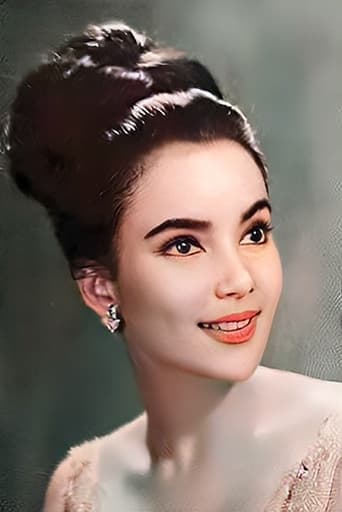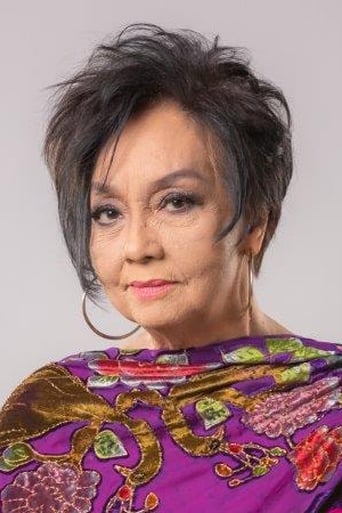ferbs54
Though he had started his career as a medical doctor, Gerardo de Leon went on to become not only a movie director, but the most awarded director in the history of the Filipino Academy of Movie Arts and Sciences (seven awards, in all). He helmed film projects in many different genres, but this viewer had, until recently, only been familiar with three of his pictures, all in the horror category. His 1959 effort "Terror Is a Man," generally cited as being the first Filipino horror film, was an excellently done reworking of H. G. Wells' "The Island of Dr. Moreau," while the two films he directed with Eddie Romero in 1968, "Brides of Blood" and "The Mad Doctor of Blood Island," had been fun, pulpy schlock exercises. (Romero would go on to direct "Beast of Blood," the third part of the trilogy, in 1971, by himself.) But perhaps the most impressive of all the films that I have seen by de Leon is 1966's "The Blood Drinkers," originally released under its Tagalog title "Kulay Dugo Ang Gabi" ("Blood Is the Color of Night"...a more artful and fitting title, I feel), when its director was 53. One of the most unusual vampire pictures that this viewer has ever seen, the film amply demonstrates (as did the 1967 Pakistani picture "Zinda Laash") that the vampire scourge truly is international in scope.In the film, which is narrated by the uncredited but unmistakable Filipino mainstay Vic Diaz, playing a country priest, the viewer makes the acquaintance of Marco, a bald, caped, pockmarked vampire who wears wrap-around junkie shades and who is portrayed by Ronald Remy (viewers may remember Remy as the villainous Dr. Lorca in "The Mad Doctor of Blood Island"). When we first encounter Marco, he and his retinue--which includes a hunchback, a hideous-looking little person, a brunette hottie named Tanya, his dead bride (Amalia Fuentes) and his mother-in-law--are gathering in a crypt, using modern-day scientific equipment to bring the deceased, Katrina, back to life. The procedure is successful, but Katrina's hold on life is a tenuous one, and so Marco decides that her twin sister, Charito (Fuentes again), must be found, and that her healthy heart must be placed into the body of his beloved! (The viewer will recall that Dr. Christiaan Barnard only performed the world's first successful heart transplant in 1967, making Marco--who proposes to perform the operation himself--not only a pioneer, but some kind of bona fide medical genius, as well!)"The Blood Drinkers" is a remarkable film in many ways. Perhaps most memorable is the look of the picture itself. While prosaic shots were shot in standard color, many of the vampire attack sequences were seemingly filmed in B&W and tinted bright orange; nighttime scenes were tinted blue; some scenes begin in color but switch to tinted halfway through, or vice versa; while other scenes, depending on the action on screen, will change tints correspondingly. The effect can be extremely artful; just witness the sight of the vampires strolling at night through a billowing orange mist, or the blue shadows of lace curtains on Charito's pretty face. The setting of the film--the jungles of the Filipino countryside--is an unusual one for a vampire outing, too, and the picture does not shrink from the occasional gross-out moment (such as the sight of a jagged, bloody neck bite). Several scenes cannot fail to impress. In one, Charito's elderly guardians, now turned into zombified vampires, stalk her at night (orange tinted during their attack; blue tinted after Marco whips them off). In another, Charito's boyfriend dukes it out with that hunchback and little person, as well as with Marco himself, who keeps vanishing and reappearing unexpectedly. The film makes good use of that creepiest-sounding of all musical instruments, the theremin (especially during hypnosis sequences) and takes especial pains to mention how important prayer and a belief in Jesus Christ are during times of peril (no surprise, as the Philippines remains largely Roman Catholic to this day). Indeed, not only are Jesus and prayer referenced, but at one point, Charito is exorcised of her hypnotic state by dint of holy water, and the mere prayers of that country priest seem to release Marco and Katrina from vampirism...for a short while, anyway. Another touching element: the depth of Marco's love for Katrina; he even allows her to suck his own neck for sustenance! The picture includes the most ingenious use of a flare gun in the history of the vampire film and, unfortunately, the fakest-looking bat (Basra, Marco's helper) in the history of the vampire film, as well. Also interesting to note: Although Marco's entire entourage is eliminated by the film's end, the main vampire himself (slight spoiler ahead) manages to survive and escape the wrath of the angry villagers. Offhand, I cannot recall another picture in which the diabolical neck nosher lives to suck another day; yet another element that makes "The Blood Drinkers" such a unique viewing experience. Is it possible that a never-too-be-realized Marco sequel was being contemplated?Further good news regarding the film is that it is available today on a great-looking Image DVD. Among the many fine "extras" on this disc is an interesting commentary by film preserver Sam Sherman; a modern-day interview with Eddie Romero himself (good luck understanding his English!); and 25 minutes' worth of (silent) lost footage, which would have seemingly steered the film in an interesting direction, playing up Tanya's jealousy of Katrina, even to the point of attempted murder. That vampiric love triangle was sadly left on the editing room floor, but what remains is quite fascinating enough, and surely worth the time of any jaded horror fan who is seeking out something different....
Uriah43
"Dr. Marco" (Ronald Remy) is a vampire who wants to revive a woman he loves named "Katrina" (Amalia Fuentes) back from the dead. In order to do that he needs to perform a heart transplant and the only acceptable donor is her twin sister "Charito" (also played by Amalia Fuentes). In the meantime, Dr. Marco must keep Katrina alive and so he has people killed so that their blood can be given to her. Naturally, these deaths cause concern among the local populace which makes it quite a bit more difficult for Dr. Marco to complete his operation. Anyway, what I found remarkable about this film was the unique technique of using red-tinted film to signify the presence of vampires. Rather interesting indeed. Likewise, the heavy use of smoke to imitate fog wasn't too bad either. On the other hand, being originally produced in Tagalog and dubbed into English caused the dialogue to seem a bit flat. Additionally, the heavy influence of Roman Catholicism was probably a bit too strong in my opinion. But this was a movie made in the Philippines so perhaps this was customary during this specific time period. In any case, this wasn't a bad movie but the overall production values seemed to be somewhat lacking. That said I rate the movie as slightly below average.
Sandy Petersen
A semi-color Filipino vampire film with lots and lots of amazing vampire action. The lead vampire, played by a bald Ronald Remy, is just fine, particularly because he is ALSO a mad scientist, who must steal the heart of his dying lover's sister to restore her. Plus he is served by a hunchback, a dwarf, another cute girl, and the old mom of the two girls he is involved with.I call it "semi-color" because many scenes are black-and-white. Some are full-color, and others are tinted blue or pink. It makes no sense either. A completely innocuous scene of some men serenading the heroine is in full-color, while the hunchback attacking and killing two people, which you'd think would be worthy of at least a tint, is normal black and white. Its like a kid who just found out about filters.The mad scientist, plus the many deformed vampires, all lead to great fun. Sure the movie makes no sense at all but who cares? The giant fake bat (de rigeur in any vampire film) appears to be a fruit bat, rather than a blood-sucking variety, and at least two of the vampires wear sporty shades while flitting around at night. That's a new one.Lots of low-budget fun. If you haven't encountered 60s Filipino horror - this is as good a place as any to start. It's fun to compare it with, say, Mexican vampire movies. Actually I would argue that The Blood Drinkers holds up against even American vampire movies from the 1960s. Nothing we did until Count Yorga holds a candle to this one. (The British Hammer Dracula films, of course, leave the poor Filipino blood drinkers panting in the dust.) Whether you appreciate this movie for its loony qualities, or for its interesting plot and scenery, it's worth a look. It is NOT cheesy in the classic sense, by the way. The actors play their parts as straight as I've seen, and the monsters are certainly not camping it up. Yeah it's weird that there is a dwarf vampire and such, but if there WERE such a thing, it may as well behave like the one in this movie.



